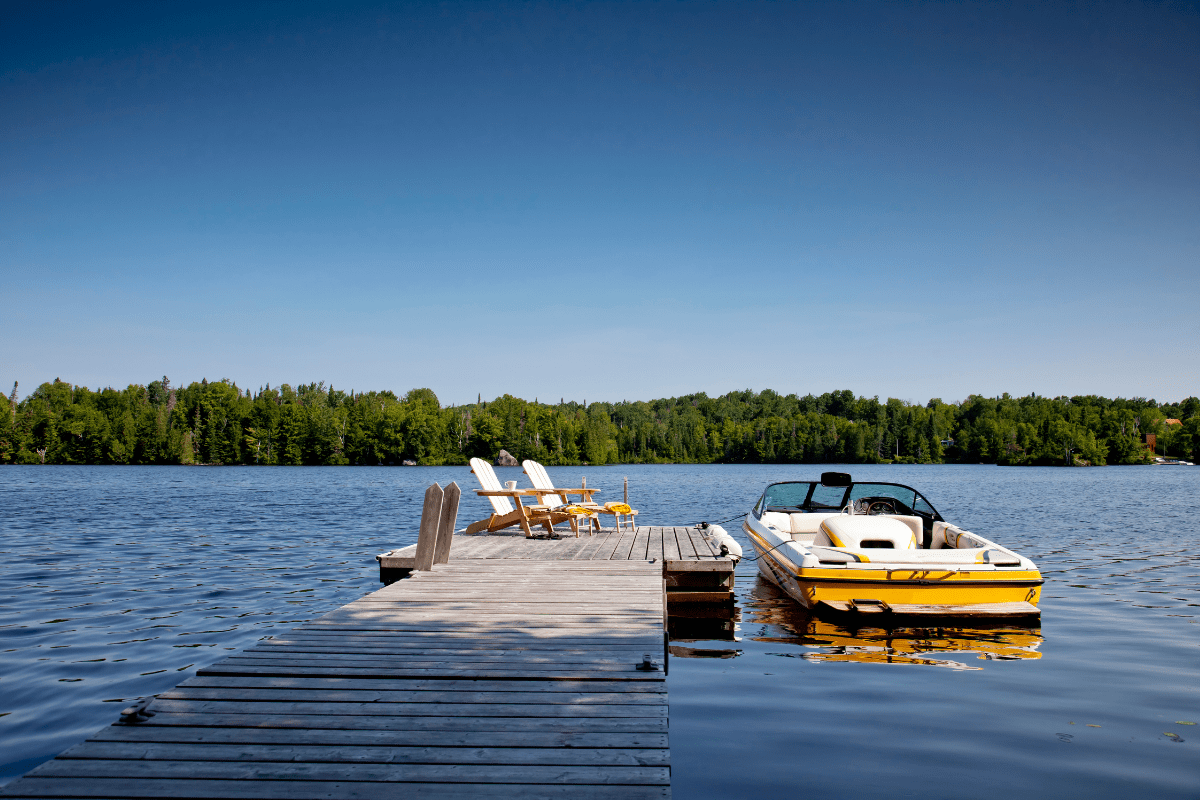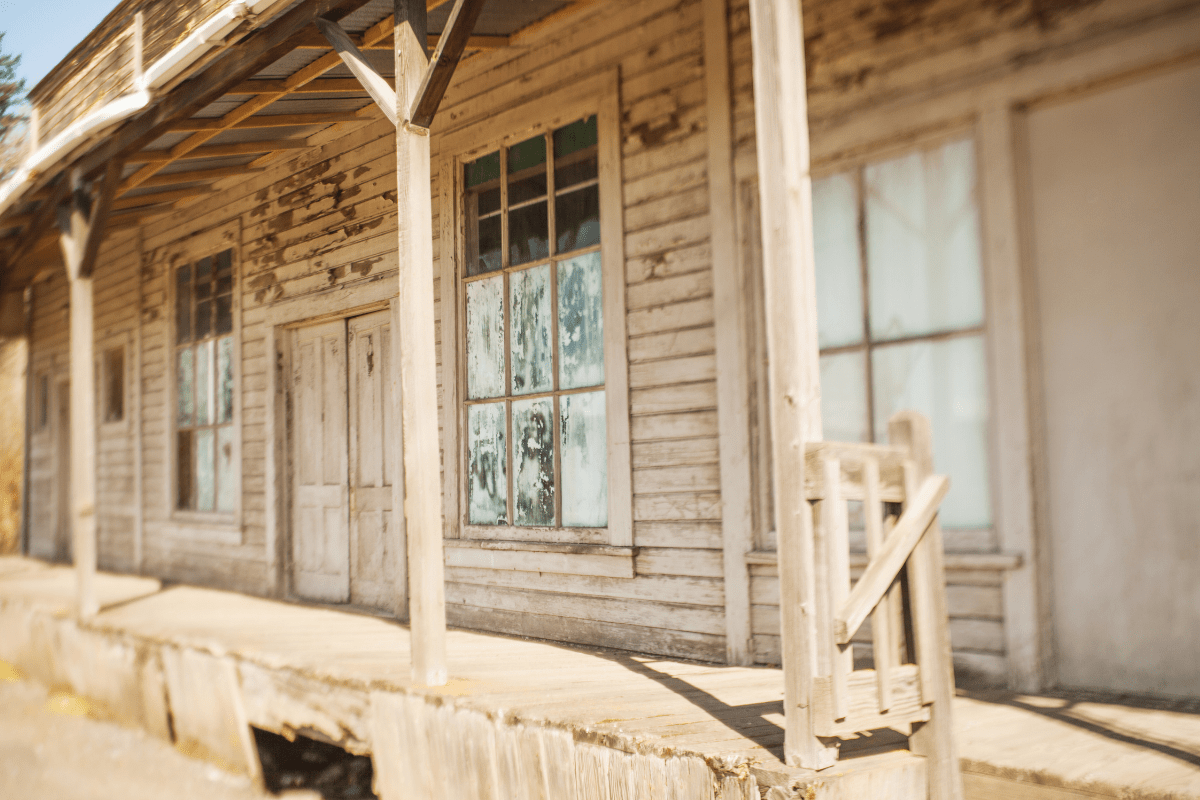Who knew Nebraska had beaches? Turns out the Cornhusker State is hiding over 1,500 natural lakes and some seriously impressive reservoirs that'll make you forget you're nowhere near an ocean. From massive Lake McConaughy with its 100 miles of white sand beaches to crystal-clear Calamus Reservoir, Nebraska's lakes offer everything from trophy fishing to beach camping, minus the sharks and jellyfish.
Lake McConaughy: Nebraska's sandy surprise
Lake McConaughy, or "Big Mac" as locals call it (because everything needs a nickname), sprawls across 30,500 acres northeast of Ogallala. This isn't just Nebraska's largest reservoir… it's a legitimate beach destination that happens to be 3,000 feet above sea level.
The lake stretches 22 miles long and 4 miles wide, reaching depths of 142 feet at Kingsley Dam. That dam itself is a beast, running 3.1 miles long and standing 162 feet high. Built during the Depression from 1936 to 1941, it employed over 1,500 workers and required relocating entire communities, including the town of Lemoyne. Today, it's the world's second-largest hydraulic-fill earthen dam, which sounds way more impressive at parties than it probably should.
Where to camp at Big Mac
The camping situation at Lake McConaughy is surprisingly extensive, though you'll need to make reservations 30 days in advance for beach camping during peak season (May 20 through September 10).
Your camping options include:
- Seven state-run campgrounds with 564 designated sites
- 950+ beach camping spots across 17 zones
- Full hookup sites at $40/night peak season
- Basic sites starting at $20/night
- Electric-only options at $30/night
The beach camping is where things get interesting. You can literally park your RV on the sand in many areas, though availability depends on water levels. Martin Bay, Arthur Bay, Sandy Beach, and Cedar View all offer swimming areas, though don't expect lifeguards… you're on your own out there.
Fishing and boating paradise
Trophy walleye averaging 24 inches make Lake McConaughy a tournament fishing destination. The lake consistently produces monster catches across multiple species including white bass, northern pike, wipers (those are striped bass hybrids, not windshield cleaners), smallmouth bass, channel catfish, and rainbow trout. Three fish cleaning stations mean you won't have to gut your catch on your truck's tailgate.
Fifteen boat ramps provide access around the lake, though some close when water levels drop. Big Mac Marina at Arthur Bay operates daily from Memorial Day through Labor Day, offering jet ski rentals and all the overpriced snacks your heart desires. The lake supports every water sport imaginable: skiing, wakeboarding, sailing, parasailing, windsurfing, and even scuba diving for those brave enough to explore what lurks 142 feet down.
One major heads up: alcohol has been completely banned at Lake McConaughy since 2020. So if your idea of lake life involves beer and boats, you'll need to adjust your expectations or find another lake.
Branched Oak Lake: Lincoln's backyard escape
Just 30 minutes northeast of Lincoln sits Branched Oak Lake, covering 1,800 acres and serving as eastern Nebraska's largest lake. Built in 1968 over the former village of Crounse (population: very small), it's part of the Salt Valley Lakes flood control system that keeps Lincoln dry during those spectacular Midwest thunderstorms.
The catfish capital
Branched Oak has developed a reputation for producing absolute monster catfish. We're talking 40+ pound flatheads and 30+ pound blues that'll make your arms hurt just thinking about reeling them in. Channel catfish, the more reasonable option, average 3 to 8 pounds. The lake also supports quality crappie, walleye, largemouth bass, wipers, and white bass.
Current fishing regulations keep things interesting:
- Walleye: 4 daily limit, 15-inch minimum
- Only one walleye over 22 inches allowed
- Wipers and flathead catfish are catch-and-release
- Channel catfish: no limit (go nuts)
The full-service marina offers everything from boat rentals to an on-site bar and grill, because nothing pairs with fishing like overpriced nachos. Nine boat ramps and 49 docks accommodate everything from jon boats to pontoons, with fish cleaning stations at areas 5 and 11 saving you from that delightful fish smell in your cooler.
More than just fishing
Branched Oak proves Nebraska park planners understand that not everyone wants to stare at a bobber all day. The recreation area includes two designated swimming beaches at Areas 1 and 2, both with buoyed swimming areas that theoretically keep boats from buzzing swimmers.
Land-based activities get creative here. There's a nine-hole disc golf course for those who like their golf with more chains and less country club, plus an archery range where you can pretend you're Katniss Everdeen. The 4.5-mile North Trail accommodates hikers who actually want to use their legs, and designated equestrian trails with 15 electric camping sites complete with corrals prove that yes, people still camp with horses in 2025.
The 268 total campsites spread across nine areas, with electric sites running $25 to $35 per night depending on how many amenities you need. Five shower houses mean you won't smell like fish and campfire for your entire stay, and the whole complex stays open year-round for those brave enough to camp in a Nebraska winter.
The Sandhills: Nebraska's natural lake district
The Nebraska Sandhills contain something remarkable: over 1,500 natural lakes formed through geological processes that sound made up but aren't. During prehistoric droughts, wind carved out basins in the sand. The High Plains Aquifer, containing roughly a billion acre-feet of water (that's a lot), rises to fill these depressions, creating lakes that range from freshwater to legitimately salty.
Calamus Reservoir: Crystal clear and muskie-filled
Calamus Reservoir near Burwell covers 5,142 acres with water so clear you can actually see what you're swimming with… which might not always be comforting. Virginia Smith Dam, completed in 1986, created this reservoir that now irrigates 53,000 acres of farmland while providing exceptional recreation.
The fishing forecast for 2025 looks particularly good for white bass over 12 inches. The reservoir also supports walleye, muskie (the fish, not the cologne), largemouth bass, and crappie. Five boat ramps with seasonal docks serve boaters, while four camping areas range from developed sites at Homestead Knolls to waterfront tent camping at Valley View Flat.
Merritt Reservoir: Dark skies and big walleye
Merritt Reservoir achieved something special in 2022 by becoming Nebraska's first International Dark Sky Park. This 2,906-acre lake southwest of Valentine offers 44 miles of shoreline and depths reaching 111 feet. The lack of light pollution makes it perfect for the annual Nebraska Star Party, where astronomy nerds gather to look at things millions of miles away while standing in Nebraska.
The fishing here consistently produces 15 to 20 inch walleye, plus trophy muskie for those with patience and strong arms. With over 140 campsites across multiple areas, eight picnic shelters, and 200 picnic tables, Merritt can handle crowds while still feeling remote. The conservation pool sits at 2,946 feet above sea level, which matters to exactly three people but sounds impressive.
Understanding Nebraska's fishing scene
Nebraska takes its fishing seriously, operating five state hatcheries that have been stocking waters since 1927. The spring 2025 stocking schedule alone includes 8,300 trout for Lake Ogallala, split between cutbow hybrids (yes, that's a real fish) and rainbow trout.
License costs and regulations for 2025
Before you wet a line, you'll need proper licensing:
- Resident annual: $34 (includes Aquatic Habitat Stamp)
- Non-resident annual: $76
- Daily permits: $5 resident, $12 non-resident
- Youth under 16: free (finally, a break for parents)
New 2025 regulations include slot limits for black bass at several lakes, requiring release of fish between 15 and 18 inches. The statewide walleye limit remains four daily with eight possession, maintaining that 15-inch minimum with only one over 22 inches allowed.
Tournament fishing thrives here, with the Nebraska Walleye Trail hitting Harlan County, Johnson Lake, McConaughy, and Merritt. The 2024 Midwest Walleye Challenge saw 316 walleye caught, with the largest measuring 30.5 inches from Lake McConaughy. Professional guide services run $230 to $400+ per trip, depending on how much hand-holding you need.
Water quality: The stuff nobody talks about until it's too late
Nebraska monitors 51 public recreational lakes weekly from May through September through its Beach Watch program. They test for harmful algal blooms and E. coli, issuing health alerts when microcystin toxin exceeds 8 parts per billion or E. coli hits 235 colonies per 100ml of water.
Blue-green algae blooms typically peak during warm summer months when agricultural runoff increases nutrient levels. Warning signs include water that looks like pea soup, smells terrible, or has a paint-like surface scum. If you see water that looks like it could glow in the dark, maybe don't swim in it.
Recent alerts in July 2025 affected Maskenthine Reservoir, Glenn Cunningham Lake, and Kirkman's Cove Lake. The state maintains a real-time monitoring system where you can check current conditions before heading out.
Planning your lake visit: The practical stuff
Peak season runs May 20 through September 10, when all facilities operate fully and you'll definitely need reservations at popular spots. The state's online reservation system accepts bookings 180 days in advance for camping and one year ahead for cabins, with an $8.50 reservation fee that seems small until you book six trips.
Best times to visit
May through June and September through October offer ideal weather without the crushing crowds. Fall brings temperatures between 45 and 75°F with lower humidity and actual colors in the landscape. Winter transforms lakes into ice fishing destinations where you can use five lines instead of the usual two, though sitting on frozen water in Nebraska winter requires a special kind of dedication.
Spring delivers excellent pre-spawn fishing and bald eagle viewing at Branched Oak and Lewis & Clark lakes. Just remember that March in Nebraska can mean 70°F one day and a blizzard the next.
Hidden gems worth finding
Skip the crowds at these lesser-known spots:
- Memphis Lake for largemouth bass without the pressure
- Big Alkali Lake in the Sandhills for crappie
- Zorinsky Lake in Omaha for urban fishing
- Standing Bear Lake for family-friendly, accessible fishing
- Valentine National Wildlife Refuge's 72,000 acres of natural Sandhills lakes
Other notable lakes worth your time
Lewis and Clark Lake spans 31,400 acres on the Missouri River, offering 10 modern cabins that sleep seven for $160 per night. With over 350 campsites, it's a massive recreation area, though it lost 30% of its surface area to sedimentation by 2016… nature's way of saying nothing lasts forever.
Harlan County Lake provides 283 campsites between Hunter Cove and Methodist Cove, accommodating RVs up to 85 feet for those who believe bigger is always better. The nine-mile ATV trail at Cedar Run suits all skill levels, from "I've never done this before" to "hold my beer and watch this."
Johnson Lake hosts an annual Independence Day boat parade and fireworks display, plus something called Juneboree, which sounds made up but isn't. Fremont Lakes just completed major electrical upgrades to 50-amp service in 2024, exciting exactly the type of people who get excited about electrical upgrades.
The bottom line
Nebraska's lakes deliver way more than you'd expect from a landlocked prairie state. Whether you're after trophy walleye, beach camping, or just a place to float and forget about your inbox, these waters offer legitimate recreation without the coastal prices or attitude. Just remember to check water quality reports, book campsites early, and leave the beer at home if you're heading to Big Mac.
The best part? While everyone else fights traffic to crowded coastal beaches, you'll have miles of sandy shoreline and excellent fishing with a fraction of the hassle. Sure, you can't surf and the seafood isn't exactly fresh, but for pure freshwater recreation, Nebraska's lakes prove the Midwest's water game is stronger than anyone gives it credit for. Time to dust off that fishing rod and get your license… those 40-pound catfish aren't going to catch themselves.





